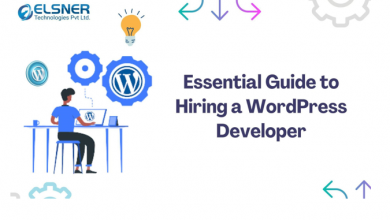Create the Optimal Meta Description – Best Tips & Tricks
The metadescription is one of the so-called metadata of a website. It provides both web crawlers and users of search engines with the content of the page.
The ideal meta description is unique and takes into account e.g. The AIDA model. Practical tools that can help you are the SERP Snippet Generator, Screaming Frog, and Marketing Tracer.
Meta descriptions in Google or Search Universe
Anyone who puts on a website will sooner or later come across important terms such as search engine optimization, or SEO for short. An important part of this is the so-called metadata, which also includes the meta description.
This plays a major role when it comes to the long-term success of a website. Because it is often the first point of contact for search engine users with the respective website.
Tip Do you have a WordPress website and would you like to equip your individual pages with meta descriptions? You can find out what options are available to you in our article on WordPress Meta description.
The meta description: definition and function
The meta description is one of the meta tags and is a short text that describes or summarizes the content of a website. This is displayed in the search engines of search engines such as Google and thus has a decisive influence on whether a page is called up or not.
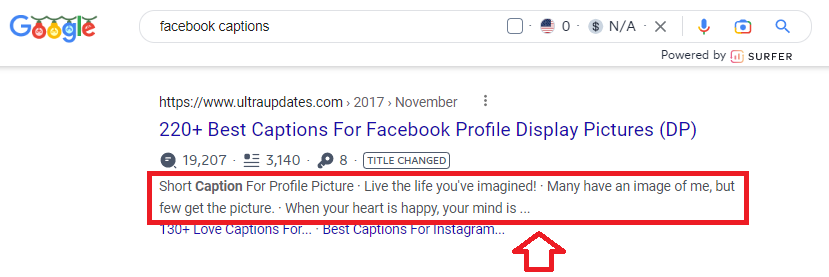
The function of a meta description is therefore to draw attention to people on a website and to inform them about its content. Ideally, it should invite you to visit the page and generate as many clicks as possible.
The 5 Best Tips for an Optimal Meta Description
Crafting an effective meta description is essential for attracting clicks and improving SEO. Utilize an SEO extension to analyze and optimize your meta descriptions. Ensure they are concise and relevant, and include the target keyword, enticing users to click while conveying the content’s essence.
1- Use the AIDA model
The first tip for an optimal meta description is to follow the so-called AIDA model, which is composed of the four stages of Attention (attention), interest (interest), desire (desire), and action (action):
Attention
Enjoy the users’ attention by incorporating an eye-catcher into the text. That can eg be keywords or symbols such as checkers.
Interest
The next thing is to win the deeper interest of users. Use terms and formulations that give a positive impression or show advantages.
Desire
In the next step, the desire should be awakened to visit your website or acquire the product described. You can achieve this, for example, with advertising promises.
Plot
Finally, the description should encourage your website. Insert a CTA (call-to-action) in your meta description. This can be formulated for action such as “buy now”.
Tip – With Local List, you can accommodate your company in a variety of the most important online industry books. You save time and improve your online presence.
2- Meta Title and H1 consider
Since the meta description together with the associated Meta Title appears in the search results, you should make sure that both fit well together.
Likewise, the H1 heading should harmonize with both, as it is usually the first to read users after calling up their website. Avoid identical formulations, but at the same time make sure to coordinate the content.
3- Take into account the target group
When writing your meta description, you should also be aware of the target group of your website. Use a writing style or certain formulations that can easily understand and find your potential readers or customers. Likewise, it can help to take a look at the search intention of said users and to cover them in the short text.
4- Pay attention to the length of the meta-description
Another point that you should take into account is the number of signs. About 150 characters (including spaces) are the ideal meta description length.
The information fluctuates because Google works with pixel widths. The maximum value is on the desktop and 1,300 pixels on mobile devices with a width of 990 pixels. The latter value is lower due to the smaller displays.
A description text that is too long is cut off with three points at the end. Accordingly, the most important information and keywords should always be at the beginning.
At the same time, you should use the existing space to place relevant content. Tools can help find the optimal length, for example, the SERP Snippet generator from Sistrix below.
Read Also: Google Pixel Tablet: Specs, Release, and Price Info
5- Write Unique Content
In addition, the ideal meta description is so-called unique content, i.e. unique content. This means that you write individual description text for the different pages of your website and avoid duplications. Because Duplicate Content can ultimately hurt search engine ranking.
The main reason for unique description texts is their interest in convincing users and users to find exactly what they are looking for on the respective page. If there are different pages with identical descriptions, visitors are disappointed and quickly jump off again. This in turn sends negative signals to the search engine.
If you do not come after the writing of Meta descriptions, this does not have to be a broken leg: the search engines can automatically use a relevant section of the corresponding page until you set your text. Whether this is useful depends on the individual case. In general, it is always better to formulate your descriptions.
Tip – With Google Ads Management Services, you will receive a Google Ads strategy that fits your company! In this way, you improve your customer acquisition and increase your success.
Helpful tools for meta descriptions
In the ever-evolving landscape of digital marketing, crafting compelling meta descriptions is a crucial aspect of optimizing online content. To streamline this process and enhance the effectiveness of your meta descriptions, leveraging helpful tools becomes imperative.
One such indispensable tool is the Keyword Rank Checker, designed to provide insights into your website’s ranking for specific keywords. These tools empower marketers and content creators to refine meta descriptions strategically, ensuring they align with search engine algorithms and elevate the overall visibility and performance of their online presence.
With the Keyword Rank Checker at your disposal, crafting meta descriptions that resonate with both search engines and your target audience becomes a more efficient and targeted endeavor.
SERP Snippet Generator of Sistrix – view the preview of your metadata
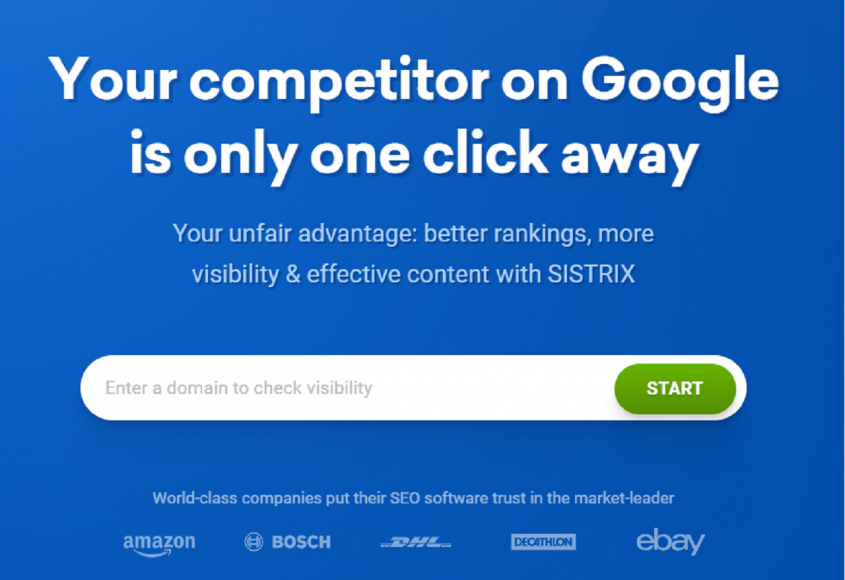
The SERP Snippet Generator of Sistrix is a practical tool with which you can check whether the length of your metadata is right and how it is displayed as a search result. To do this, enter your text in the corresponding fields and it will be presented to you as a desktop and mobile snippet.
So you can see at a glance how your content is shown on different devices. Mobile SEO, i.e. the optimization of mobile websites, is an important ranking factor.
Screaming frog – find duplicate content
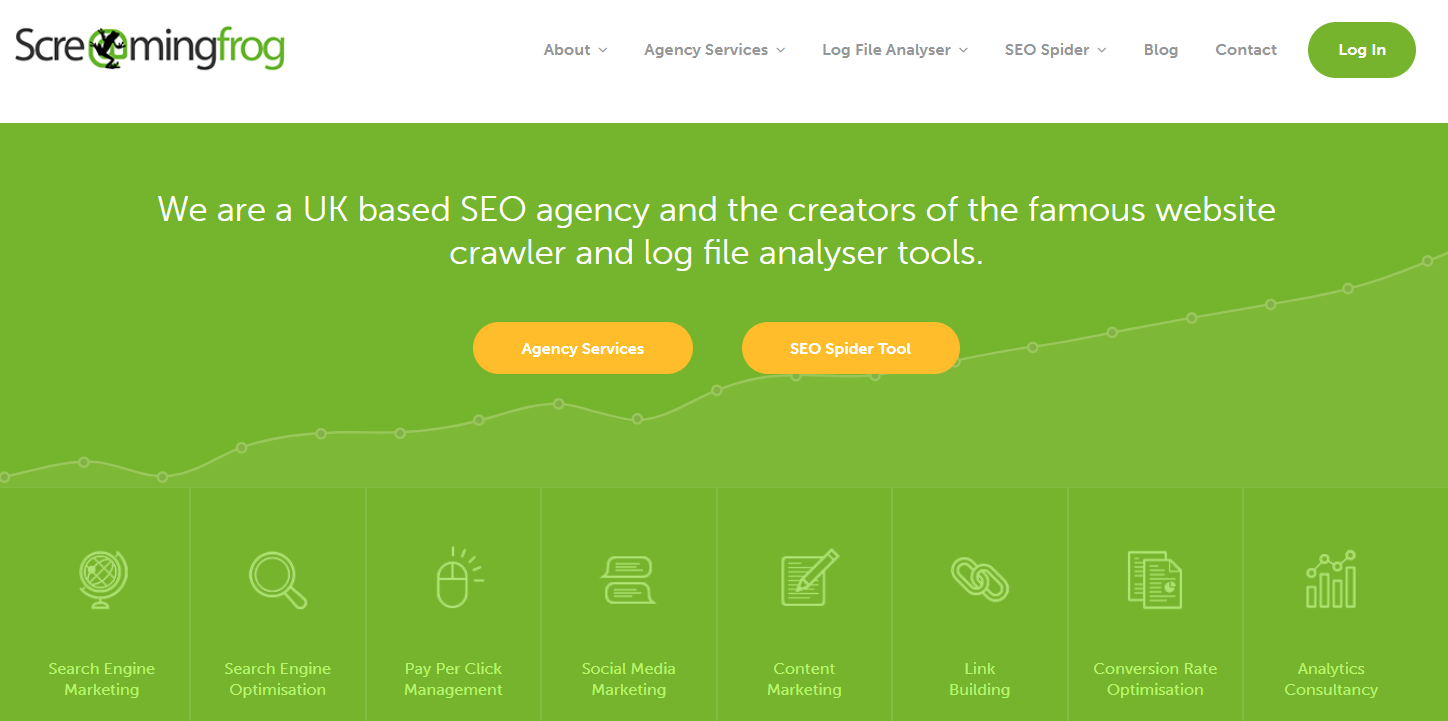
Screaming Frog SEO Spider is a website crawler with the help of which you can improve and check your OnSite SEO whether there is double or very similar content on your pages. After the crawl, this so-called duplicate content is listed under “Content”. Double and otherwise striking meta descriptions can be found under the rider of the same name.
MarketingTracer SEO Audit – Pages without Meta Description
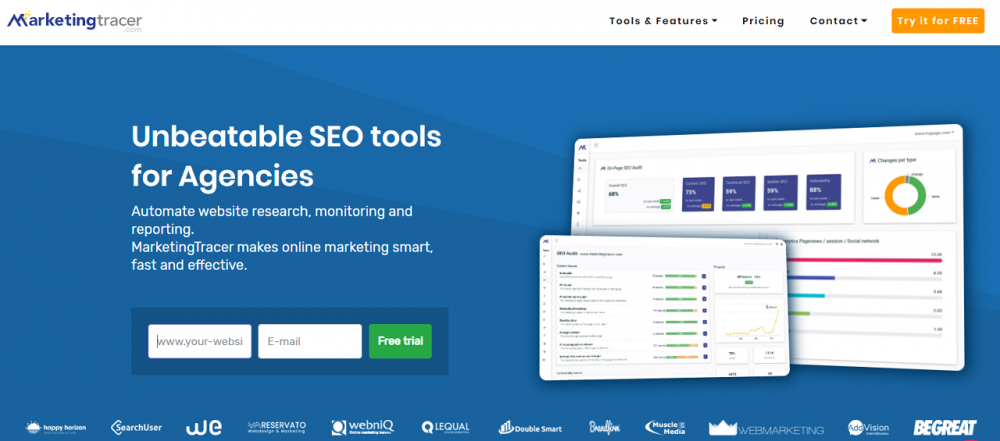
The online marketing tool MarketingTracer has various features that help you optimize your SEO content. One of them is the SEO audit tool, with which you can find the pages of your website, for example, that do not have a meta description. Other errors or defects will also be listed clearly so that you can gradually perfect your website.
Tip – With our ranking coach, you will learn professional search engine optimization. Increase the visibility of your website step by step and improve your placement in the search results.
Conclusion
If you have a website, it is advisable to equip each of your pages with an individual meta description. In doing so, you inform users of search engines about the content of your websites. With well-formulated and suitable meta descriptions, increase the chances that your site will be called up and that you ideally win new customers.





